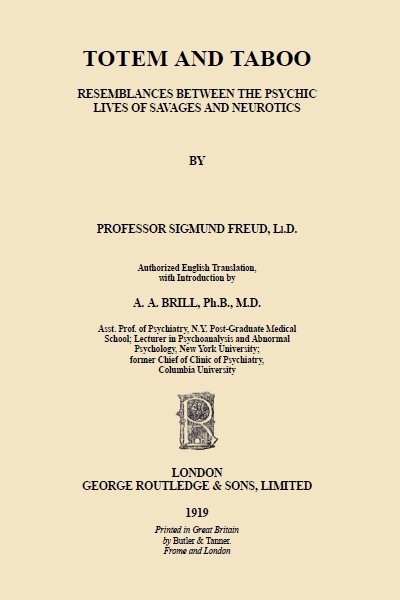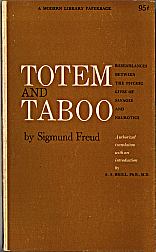

At this point, however, the ambivalence of emotions proved decisive.

In this they satisfied the same hate impulse that is a normal infantile trait and the basis of most neuroses, but which often leads to unconscious “displacement” of feelings, especially upon animals.

The expelled sons of the primal horde finally banded together and slew their father, ate him, and appropriated the females. The Oedipus complex directed upon these two hypotheses welds them into a mechanism with which it is possible to explain most of the essentials of human civilization, as follows.

To this Freud adds the Robertson Smith theory that sacrifice at the altar is the essential element in every ancient cult, and that such sacrifice goes back to a killing and eating by the clan of its totem animal, which was regarded as of kin with the clan and its god, and whose killing at ordinary times was therefore strictly forbidden. 258) “that the beginnings of religion, ethics, society, and art meet in the Oedipus complex.” He commences with the inference of Darwin, developed farther by Atkinson, that at a very early period man lived in small communities consisting of an adult male and a number of females and immature individuals, the males among the latter being driven off by the head of the group as they became old enough to evoke his jealousy. There is the more reason for this because, little as this particular work of Freud has been noticed by anthropologists, the vogue of the psychoanalytic movement founded by him is now so strong that the book is certain to make an impression in many intelligent circles.įreud’s principal thesis emerges formally only toward the end of his book, but evidently has controlled his reasoning from the beginning, although perhaps unconsciously. THE recent translation into English of Freud’s interpretation of a number of ethnic phenomena offers an occasion to review the startling series of essays which first appeared in Imago a number of years ago.


 0 kommentar(er)
0 kommentar(er)
